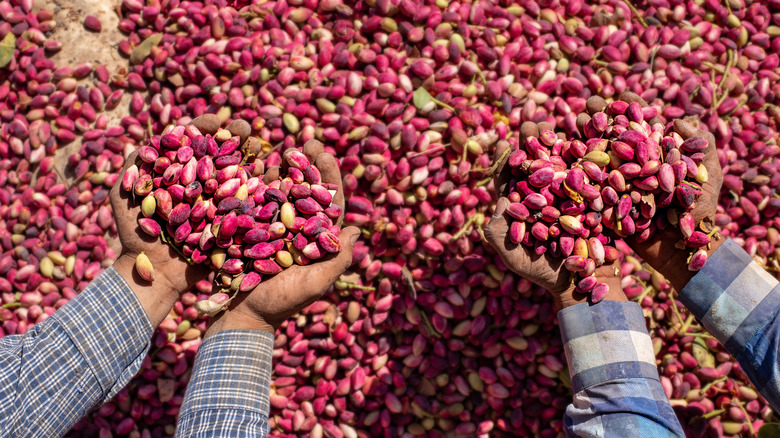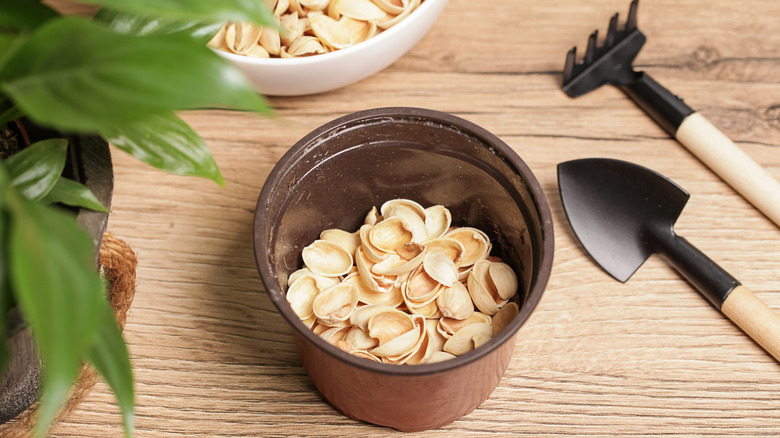Why Were Pistachios Dyed Red? The Odd Reason You Never Knew
These days, when you think about pistachios, a creamy green color palette probably comes to mind. Whether you're eating them straight from the bag, incorporating them as flavorful elements for the best falafels, turning them into pistachio paste lattes, or enjoying cool matcha pistachio popsicles, the pale green color of the nut is unquestionable. So it's hard to imagine that at one point, the default color associated with store-bought pistachios was actually bright red!
That's right — until the 1970s, virtually all the pistachios on grocery store shelves in the United States had a cherry red color that was known to leave a residue in your mouth and on your hands. This wasn't due to any biological difference in the nuts; rather, they were dyed to look that way. But why, exactly, did pistachio sellers want to alter the color of their precious nuts so drastically? And for that matter, why did they suddenly stop? There are a couple of possible answers, but what we know for sure is that importation practices had a lot to do with it.
Before the 1970s, America imported most of its pistachios from Iran and other Middle Eastern countries. These imported nuts were considered an expensive delicacy and their aesthetic appeal to customers was important. One story behind the red dye is that it was first used by pistachio street vendors in Brooklyn to make their product stand out, which then became standard practice throughout the country. The other, better known explanation is that red dye was applied to mask the stains and imperfections that resulted from the harvesting process.
Domestic pistachio production marked the end of red pistachios
This second explanation is the one espoused by most American pistachio experts today. When pistachios were traditionally harvested overseas back in the day, they were not immediately hulled and washed, which led to oils from the hulls staining the shells. Thus, importers started dying the nuts red, shell and all, to hide the stains, along with any other markings that occurred during shipping. By the end of the 1980s, however, the practice had fallen out of favor, as pistachio production shifted to a domestic operation. When Californian farmers started to grow and harvest pistachios domestically in the 1970s, they removed the hulls from the shells immediately, which eliminated staining and the need for red dye.
Pistachio production boomed in California in that era for a couple of reasons. American relations with Iran suffered as a result of the 1980 hostage crisis, and an embargo limited Iranian imports to the United States. Simultaneously, cultivation of pistachios in California got a boost in the 1970s due to a new aqueduct, which enabled new land to be farmed. Plus, pistachios require a Mediterranean climate to grow, much like olives, which is why California offered the best environment for the delicate nut.
Today, statistics from World Population Review indicate that the U.S. is the largest producer of pistachios in the world, and 99% of American pistachios come from California. Though red pistachios were once commonplace, you're now unlikely to find them anywhere, unless you decide to dye your own for old time's sake.

